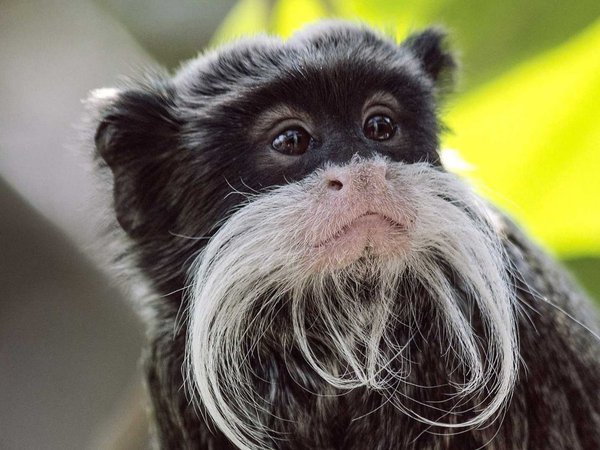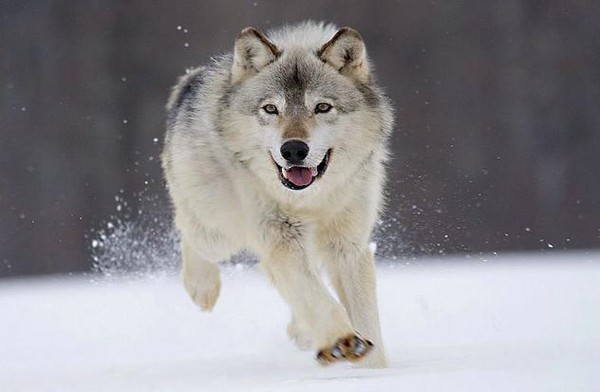We often tend to debate whether puppies or kittens are cuter, but has anyone ever thought about other adorable animals like hummingbirds or wombats?
Let’s take a look at the list of 20 most adorable wild animals on earth below compiled by Business Insider.
As a herbivore and living mainly in Western Australia, the Quokka marsupial (weighing about 2 – 5 kg) is known as the happiest animal in the world because its mouth always looks like it is smiling.
Few people would expect that the Arctic fox can withstand cold up to -50 degrees Celsius. With white fur, the Arctic fox can cleverly camouflage in a snow-covered environment as well as approach its prey without warning. discovered.
Sea otters are carnivorous mammals that live in oceans such as the North Pacific. With thick fur (about 1,000 hairs/square mm) that is smooth and waterproof, sea otters eat, sleep, hunt and mate mainly underwater.
The pygmy hippopotamus has dark green or brown skin, and the lower body is dark gray. The skin of the pygmy hippopotamus secretes a special alkaline substance with a dark pink color that makes people mistake it for blood sweat.
That alkaline substance is said to help hippos resist bacteria and light. Because their skin easily dries out, pygmy hippos spend most of their lives underwater.

Most hummingbird species are only 7 – 13cm long and weigh less than a penny. Thanks to such a compact body, hummingbirds can beat their wings 50 – 200 times/second and fly at a speed of 54km/h. Hummingbirds’ metabolism is so fast that their heart rate can reach up to 1,260 beats/minute.

Sea turtles can weigh up to 200kg, living mainly in tropical and subtropical waters around the world. With a lifespan of up to 150 years, sea turtles have extremely good memories throughout their lifespan.

Black-footed cats are the smallest wild cats, weighing only 1 – 2kg. They live in southern Africa and are solitary animals, active mainly at night. Although small, this breed of cat is a very active hunter, they can hunt up to 14 small animals in just one night.

Mandarin ducks often live in Southeast Asia, England and North America. With a particularly colorful appearance, mandarin ducks often forage for food – vegetables, seeds or especially acorns – at dusk or dawn to avoid encountering predators. During the day, they often perch on trees or swim underwater to rest.

Tamarin emperor monkeys are about the size of a squirrel, are very sociable and live in large groups in Peru and the southern Amazon basin.
The fur of this primate is mainly gray, the limbs are black and the tail is brown. The most prominent feature on his face is his long white mustache.

The thin membrane on the toes of Madagascar geckos allows them to move easily on bamboo and glass materials. Madagascar geckos are about 18cm long and live mainly on the island of Madagascar and surrounding islands.

Red pandas have the ability to balance very well thanks to their bushy tails. Their white and red fur helps them blend in with their wooded habitats. Red pandas can be found in Tibet, India, Bhutan, the mountains of northern Burma and southwestern China.

American ferrets are very active and are skilled at climbing trees and swimming. They are most commonly raised on farms for their fur.

Fennec fox or long-eared fox lives in the Sahara desert and North Africa. They are the smallest fox breed in the world with a length of only 20 – 40cm. Long and large ears will help the Fennec fox radiate heat and cool its body.
 When born, baby bottlenose dolphins weigh about 15kg and are about 1m long. When mature, they have an average length of 3 meters.
When born, baby bottlenose dolphins weigh about 15kg and are about 1m long. When mature, they have an average length of 3 meters.Gray dolphins or bottlenose dolphins are extremely loyal and very intelligent. They communicate with the herd through a complex system of hisses and whistles. Gray dolphins also use echolocation to find prey by making 1,000 clicks per second.

The Northern Pygmy Owl is quite small in size because when mature, it is only about 15cm tall. Although they live mainly in North and Central America, pygmy owls are difficult to spot in the wild because of their small body size and dark feather color.

Gray wolves are the ancestors of today’s modern dog breeds and often live in packs. Gray wolves are very resilient, can hunt continuously for long periods of time and run at a speed of about 65 km/h.
This wolf species often howls to communicate with others. Their howls are very loud and long, very scary. Today, gray wolves live scatteredly in Canada, North America, Europe and Asia.


Wombat is a dwarf marsupial, usually nocturnal and solitary. Wombat bears live and grow in underground burrows or tunnels that they dig for themselves in grasslands or eucalyptus forests in Australia.

With a height of 0.3m, this little blue penguin is known as the smallest penguin in the world. They live mainly in New Zealand, the Chatham Islands and southern Australia.

Pufferfish can be found in tropical waters around the world, from the West Coast of Africa to the Galapagos Islands. When threatened, the pufferfish will suck in water or air, increasing its body diameter by at least 3 times.

Seals are also excellent divers, they can dive for an hour at a depth of 500m without having to surface to get more oxygen. Seals conserve oxygen by slowing the heart rate and regulating blood flow to only the most vital parts of the body. When diving, their heart rate can drop to 20 beats per minute.





